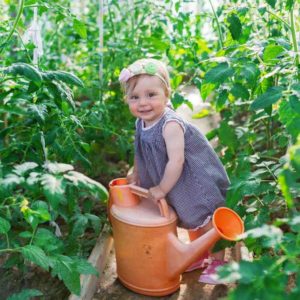
Green eating is a lifestyle that is backed by science and can improve your children’s health and help the environment.
Today you see phrases like “Eat Green” or “Go Green” almost everywhere. Although it may seem repetitive, there are valid reasons behind these friendly reminders. Living the green life is healthier for you and it’s better for the planet. Focus on more local products, organic goods, fresh fruits and vegetables, and foods high in nutrients. This will help weed out the others that are high in added sugars and chemical preservatives.
Environmental benefits to being greener include reducing the number of pesticides and herbicides released into the environment, improving ocean health by supporting sustainable fishing practices, and reducing carbon emissions by buying local. Remember that simple, everyday changes can add up to make a significant difference! Try out these top five simple ways of getting greener.
Eat more plants!
Fruits, vegetables, whole grains, legumes, lentils, nuts, and seeds all stem from the ground and require much less energy to produce than meats. This is great for the planet, as eating these plant-based foods helps reduce the production of greenhouse gases. Reducing greenhouse gasses is important to help combat climate change! Here are some easy ways to boost your kid’s plant intake:
- Pick one day each week to have a meat-free dinner. Start with kid-friendly tacos by replacing the meat with beans and adding in the veggies and whole grain tortillas!
- Add veggies or beans to soups, casseroles, and pasta sauces.
- Focus on whole grains, fruits, and veggies at meal times, using meat as the side.
Plant a garden
There is nothing more eco-friendly than cooking food straight from your own soil. Plus, you will know that your produce is chemical-free, home-grown, and required no fuels to arrive in your kitchen.
- If you have limited space to garden buy small pots and good soil, and grow your own favorite herbs! Say “goodbye added salt,” and “hello homegrown herbs!”
- Read our interview with TV host and expert gardener Joe Gardener® for tips on gardening with kids.
Buy local
Shopping at your local farmer decreases your foods’ travel time. Your local farmer may also be more likely to use sustainable, earth-friendly farming methods. Don’t be afraid to ask them to find out! In the end, you get fresher food loaded with flavor, and the planet may be better off, too! Sounds like a win-win situation!
- To start, take a fun family outing to the farmer’s market, look for locally grown foods at your grocery store, or sign up for a community supported agriculture box.
Eat with the seasons
Seasonal foods are easier on your budget and better for our planet, as they have trekked less mileage to make it inside your reusable, eco-friendly grocery bag. If you’re having trouble figuring out which foods are in season, stop by the farmer’s market, take a look at the produce that’s on sale in your produce section, or check out this Seasonal Produce Guide from SNAP-ed website.
Go organic!
Buying organic foods reduces the number of chemicals used in the growing process, which helps protect both the environment and the farmers that grow our food. However, for many people, it isn’t realistic to buy all organic foods with a certain budget. When you can, opt for organic. If you’re having a hard time deciding, refer to the “Dirty Dozen” and “Clean Fifteen” lists. These lists tell you which fruits and veggies are the most pesticide-ridden, and which ones are the least.
- The Dirty Dozen: strawberries, spinach, nectarines, apples, grapes, peaches, cherries, pears, tomatoes, celery, potatoes, and sweet bell peppers. (1)
- The Clean Fifteen: include avocado, sweet corn, pineapple, cabbage, onions, frozen sweet peas, papayas, asparagus, mangoes, eggplants, honeydew, kiwis, cantaloupe, cauliflower, and broccoli. (2)
For the more information on organic and local foods, read our interview with national organic expert, Chris McCullum-Gomez.












